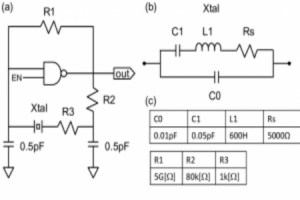Unlocking the Potential of Sine Wave Oscillator
What is sine wave mean?
A crystal or oscillator circuit’s standard or natural output is a sine wave. There is only one primary sinusoidal frequency output. The linearity sine wave outputs have the best phase noise performance of all the outputs. They are excellent for applications that demand an output signal of high quality. An oscillator is a circuit that creates sinusoidal waveforms with fixed amplitude and frequency using a positive feedback amplifier. It is the primary power source for many electrical and electronic devices. The positive feedback amplifier can produce a sinusoidal signal even without input. The gadget is referred to as an oscillator since these signals are referred to as oscillations.
What does Sine wave oscillator mean?
- Sine waves are the most fundamentally sound and are produced by sine wave oscillators, which are also the simplest waveforms. An electronic circuit that generates a single-frequency sine wave is known as wave oscillator and serves as a crucial tool for producing sound and electricity for many different sectors. They are used to make sine waves, a waveform with a regular, predictable behaviour that may be employed to create various sounds.
- It is a circuit that generates a sine wave as an output from an electrical oscillator. It is a specific electrical oscillator circuit employed in various settings, including test and measurement equipment, audio amplifiers, and radio transmitters and receivers.
Unlocking Their Potential of Sine Wave Oscillators:
Electronic devices called sine wave oscillator to create sine waves with a predetermined frequency and amplitude as their output signal. A little noise signal is amplified and returned to the amplifier’s input when the oscillator is turned on through the feedback network. As a result, the feedback network’s chosen sine wave frequency is produced by the amplifier. The feedback network then receives the amplifier’s output and feeds it back, maintaining the oscillation. They are extensively employed in various fields, including science, audio and music creation, and telecommunications. To help them reach their full potential, try the following:
- Frequency Control:
Feedback systems allow for exact frequency control, produced by a sine wave oscillator, capable of producing various frequencies. They may therefore be utilized in radio communication and other applications that call for precise and reliable frequency production.
- Control of Signal Amplitude:
The wave oscillators may also generate signals with variable amplitudes. If the movement has to be increased or muted, this might be helpful in audio applications.
- Phase Control:
It is possible to modify the phase of the sine wave output, which is advantageous for signal modulation applications and other situations in which the signal phase must be altered to convey data.
- Waveform Synthesis:
Complex waveforms can be produced by combining sine wave oscillator with other waveform generators, such as square wave or triangle wave oscillators. This has applications in sound synthesis and the creation of music.
- Signal processing:
Applications for wave oscillators include filtering and equalization in signal processing. For instance, the frequency responsiveness of a system may be measured using a sine wave oscillator as a reference signal.
Understanding the Sine Wave Oscillator Applications:
An electrical signal is continuously, periodically, and symmetrically oscillated by a sine wave oscillator. It generates a waveform that mimics the sine wave’s mathematical behaviour. Applications for this kind of oscillator may be found in a number of industries, such as telecommunications, engineering, music, and science. Here are a few applications for it:
- Signal Generation:
These wave oscillators are frequently employed to produce signals with a certain frequency and amplitude. These signals are used in several applications, including control systems, audio and video processing, and communication.
- Audio Processing:
These wave oscillators are used in audio processing to create tones with certain frequencies. This may be used to test audio equipment, make sound effects, and produce musical notes.
- RF Systems:
These wave oscillators produce signals for radio broadcasting, radar systems, and satellite communication in radio frequency (RF) systems.
- Instrumentation:
These wave oscillators are employed in scientific and technical instrumentation to provide exact test signals for testing apparatus like filters and amplifiers.
- Calibration:
To test and fine-tune electronic equipment, calibration techniques employ wave oscillators. They can produce signals with exact frequencies and amplitudes that are used to check the precision of measuring devices.
What are a Sine Wave Oscillator’s positive aspects?
An electrical circuit known as a wave oscillator produces a sine wave output signal. A sine wave oscillator has the following advantages:
- It may create a sine wave output signal that is very accurate and predictable, making it helpful in various applications that call for exact timing or frequency control.
- An oscillator’s sine wave output has a low distortion, which makes it perfect for systems that need a precise and clean signal, such as audio and radio-frequency circuits.
- These wave oscillators are a popular option for many applications because they are reasonably easy to develop and integrate into electrical circuitry.
- Under various operating situations, wave oscillators can offer excellent frequency and amplitude stability.
- These oscillators are versatile because they may be applied to a wide range of tasks, including signal generators, frequency synthesizers, and audio amplifiers.
- These oscillators have a low noise level, which makes them appropriate for delicate applications, including medical equipment, instrumentation, and scientific research.
Conclusion:
An electrical circuit known as a sine wave oscillator produces a sine wave signal. The fundamental idea behind a sine wave oscillator is to establish a feedback loop using an amplifier and a network that controls frequency (often a resistor-capacitor combination or an inductor-capacitor combination), causing the amplifier to oscillate at a certain frequency. ChipSun Technologies offers R&D solutions, turnkey solutions, e-commerce, and other value-added services to satisfy the requirements of various clients, including original equipment manufacturers, original design manufacturers, and electronic manufacturing service providers.

